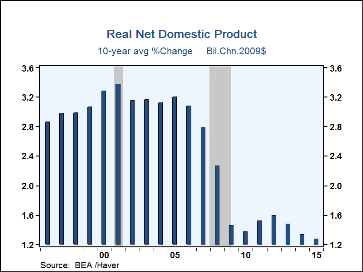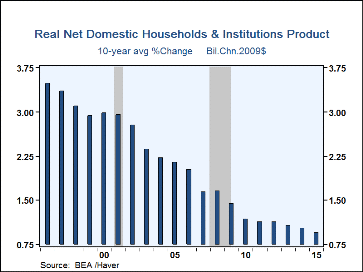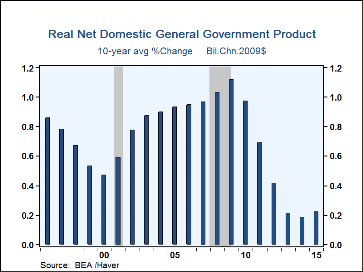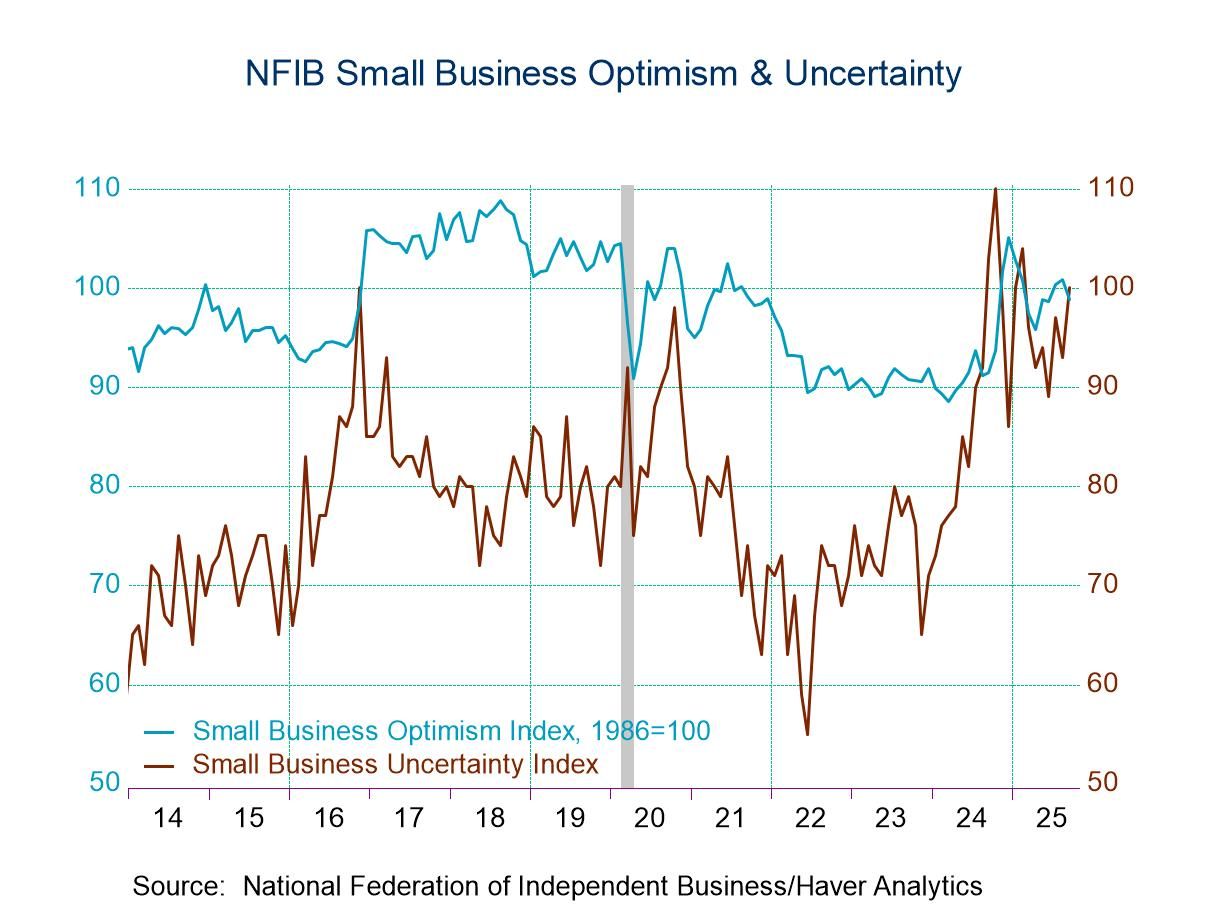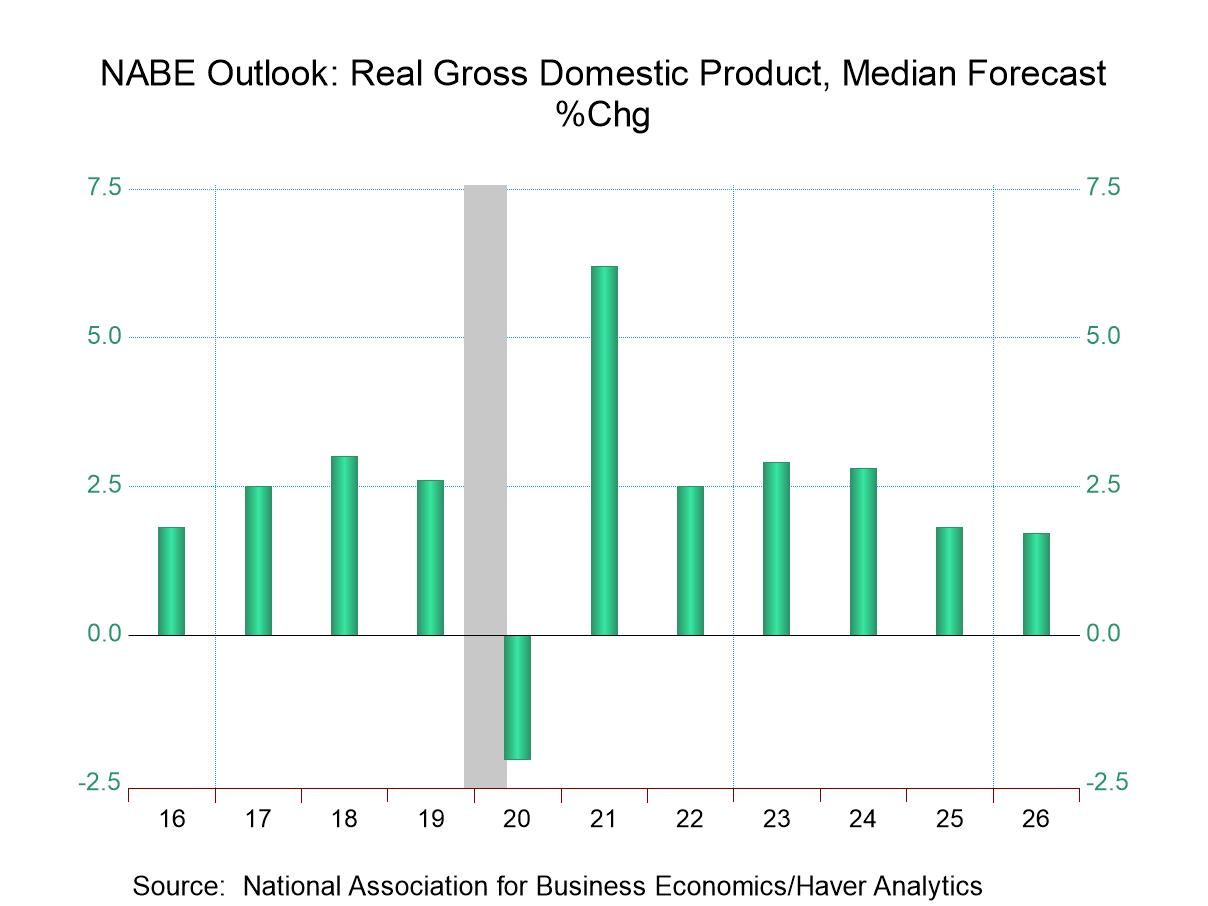 Global| Jan 20 2017
Global| Jan 20 2017U.S. Growth Slowdown Was Broad-Based; Recent Improvement Led by Business
by:Tom Moeller
|in:Economy in Brief
Summary
The concept of Net Domestic Product used in the following report can be extrapolated from the GDP accounts by taking into consideration the loss of value of assets (depreciation) due to aging and normal use. Over the last 50 years, [...]
The concept of Net Domestic Product used in the following report can be extrapolated from the GDP accounts by taking into consideration the loss of value of assets (depreciation) due to aging and normal use. Over the last 50 years, growth in Net Domestic Product averaged 2.7% per year, although that slowed to 1.3% annually during the last ten years. The data are issued by the U.S. Bureau of Economic Analysis as part of the national income accounts.
Over the long run, the physical product included in the GDP accounts is dominated by the input from corporations and other businesses. During the last 50 years, growth in these sectors together averaged 3.0%, and they accounted for three quarters of the economy's total product. During the last ten years, however, growth halved to an average of 1.5% per annum, mostly as a result of the severity of the last recession. In general, growth here is faster than throughout the rest of the economy due to businesses' ability to take advantage of economies of scale and new technologies. Workers' specialization and the build-up of human capital adds to these advantages of size.
In the household sector, long term growth averaged considerably less than in the business sector. Over 50 years growth has been 2.6% per year, but in the last ten it's been just 1.0%. There is little ability to take advantage of economies of scale and the boost to productivity from new technologies.
Government sector output is largely that of services, which cannot take advantage of the economies of scale found in other sectors. Overall government sector output eased 0.5% annually during the last five years, At the state & local government sector, growth in net value added averaged 0.1% per year, and in the federal government it's been 0.6% per year.
Over the short-term, as the comparisons moved beyond the 2008-2009 recession period, real growth improves, averaging 2.1% annually during the last five years. That has occurred as business sector growth picked up, and averaged 2.7%. Household sector growth averaged a steady 1.1%. Government sector output declined, however, by 0.5% per year. New technologies relevant to information processing and manufacturing likely will extend the comparative advantages of the goods-producing sector, but to the degree that these innovations can be shared, the differences with other sectors will shrink.
Data on Net Domestic Product by Sector is available in Haver's USNA database.
| Growth in Real Net Domestic Product (%) | 50-Year Avg. | 10-Year Avg. | 5-Year Avg. | 2015 | 2014 | % of Total |
|---|---|---|---|---|---|---|
| Total | 2.7 | 1.3 | 2.1 | 2.6 | 2.4 | 100 |
| Business | 3.0 | 1.5 | 2.7 | 3.1 | 3.0 | 77 |
| Households & Institutions | 2.6 | 1.0 | 1.1 | 1.6 | 1.2 | 12 |
| General Government | 1.1 | 0.2 | -0.5 | 0.8 | -0.1 | 11 |
Tom Moeller
AuthorMore in Author Profile »Prior to joining Haver Analytics in 2000, Mr. Moeller worked as the Economist at Chancellor Capital Management from 1985 to 1999. There, he developed comprehensive economic forecasts and interpreted economic data for equity and fixed income portfolio managers. Also at Chancellor, Mr. Moeller worked as an equity analyst and was responsible for researching and rating companies in the economically sensitive automobile and housing industries for investment in Chancellor’s equity portfolio. Prior to joining Chancellor, Mr. Moeller was an Economist at Citibank from 1979 to 1984. He also analyzed pricing behavior in the metals industry for the Council on Wage and Price Stability in Washington, D.C. In 1999, Mr. Moeller received the award for most accurate forecast from the Forecasters' Club of New York. From 1990 to 1992 he was President of the New York Association for Business Economists. Mr. Moeller earned an M.B.A. in Finance from Fordham University, where he graduated in 1987. He holds a Bachelor of Arts in Economics from George Washington University.


